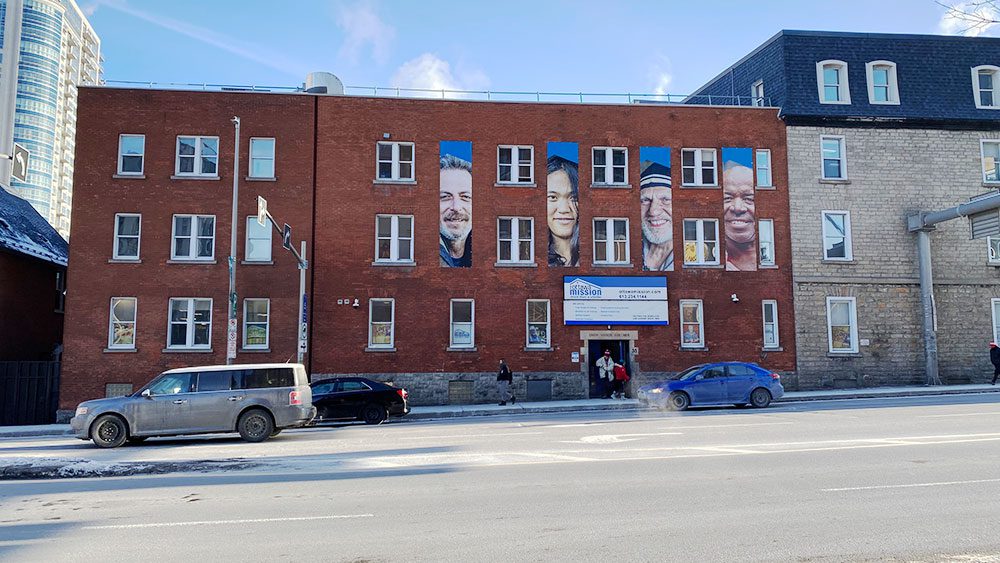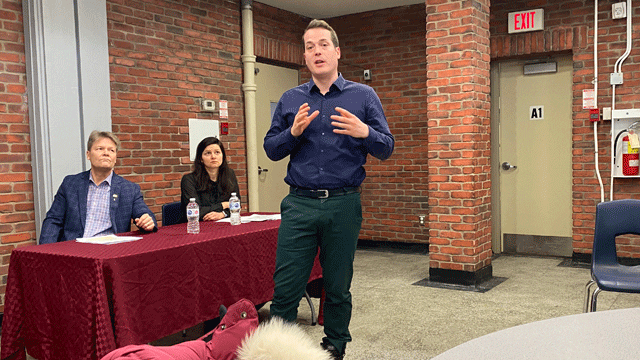
(The Ottawa Mission homeless shelter, which has been over capacity for two years. Photo:APTN)
Governments need to include more Indigenous voices if they’re going to address the overrepresentation of First Nations, Inuit, and Métis among the homeless population in the nation’s capital, according to those working on the front lines of the affordable housing shortage.
“There needs to be an investment, more of an investment for housing. They need to be speaking with Indigenous people who actually do housing – and include us. We need to be included in every aspect, right? We’re not just that afterthought,” says Tina Slauenwhite, manager of the housing department at Wabano Centre for Aboriginal Health in Ottawa.
Wabano is one of many agencies that provide housing support services for Indigenous individuals whose name may not be on any lease.
“We need to be included. I don’t understand why we’re continually being that afterthought,” she says. “I think there’s enough out there, enough knowledge for people to know that if you’re going to make any changes with regards to Indigenous homelessness that you need to be able to include those individuals that are working with the community – people that are living that experience in the community – in order for that change to happen.”
Slauenwhite spoke with APTN News as some members of city council push to declare an affordable housing and homelessness state of emergency in Ottawa.
Shelters in the city are far above capacity, which leads to individuals sleeping on floors, waiting around on chairs for a somewhere to sleep at night, families living in motels, and years-long waitlists for access to social housing.
Coun. Catherine McKenney forwarded the motion, which asks for “a special emphasis on Indigenous homelessness” and points out that Indigenous people comprise 25 per cent of the homeless population yet only account for 2.5 per cent of the general population.
Marc Maracle, executive director at the Gignul Non-Profit Housing Corporation, says this number – which comes from a 2018 city commissioned Point in Time homelessness report – is probably low.
“Ottawa is no different than any other large urban area in this country in that probably a third – I mean the Point in Time count here in Ottawa is saying 25 per cent, but that is quite likely to be an underrepresentation – and organizational knowledge here in the city of Ottawa puts that at at least a third,” Maracle says.
“And it’s even higher for Aboriginal youth. We’re starting to see more Indigenous women find themselves in homeless situations that make their lives even more vulnerable.”
“It’s just horrendous what homelessness represents in the Indigenous communities or where we have a concentration of Indigenous people,” he adds.
Slauenwhite puts the number at 30 per cent, while the housing department at Tungasuvvingat Inuit, a provincial social services hub for urban Inuit, estimates it could be closer to 40-45 per cent.
A Mohawk from Tyendinaga Mohawk Territory three hours southeast of Ottawa, Maracle says funding needs to be funneled accordingly to address this overrepresentation.
“Given the numbers on the street, there should be more resources directed. And considering the allocation of funding, you would think that whatever the percentage – if it’s 33 per cent, then 33 per cent of homeless funding that’s coming into the city should be directed by and through and for Indigenous people to deal with homelessness in ways and means that are directed by community interests and community capacity. And we find that that’s not always the case.”

McKenney agrees, supported by Mathieu Fleury, councillor for Rideau-Vanier Ward.
“We tried to narrow the conversation into one group, which is our Inuit community,” Fleury says.
There are funds from provincial and federal governments, “but Ottawa needs to develop a strategy with the partners, and it’s taken way too long. We’ve been at it for three years.”
Maracle says “about 60 per cent” of Gignul’s 201 units are in Fleury’s ward.
“That is absolutely where a majority of Indigenous people reside in this city that are in lower socioeconomic conditions. And they’re there simply because that is where they can afford to live and there’s units available. Sometimes it’s not always the best choice.”
The municipal government examines McKenney’s motion on January 29.










